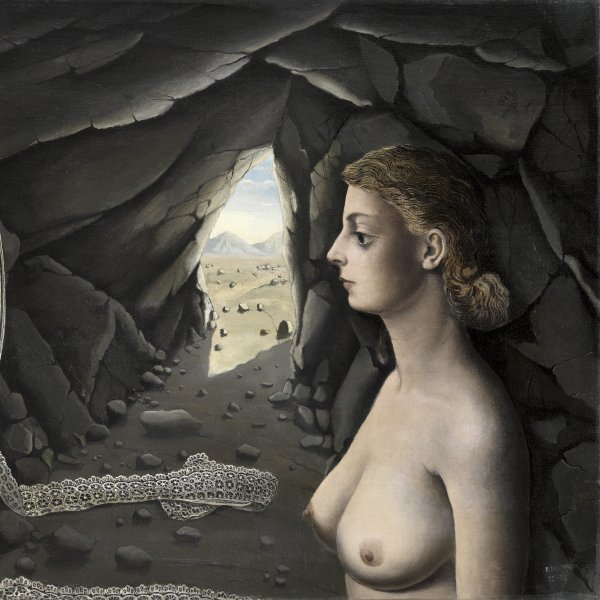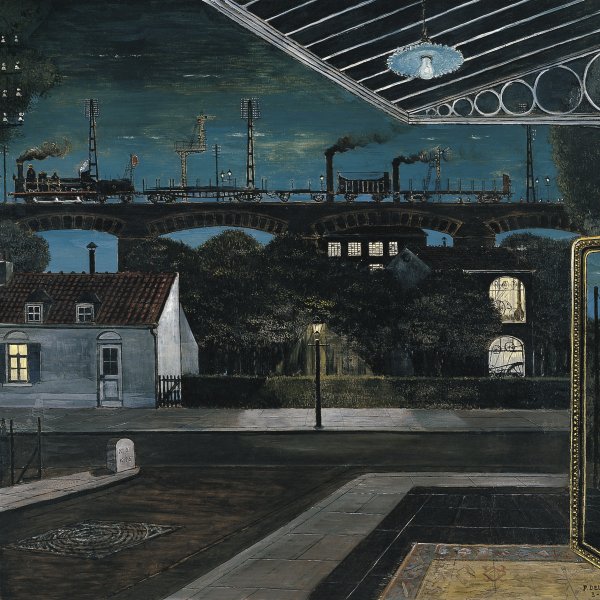Paul Delvaux
Antheit, 1897-Furnes, 1994
Paul Delvaux was one of the foremost practitioners of Surrealism in Belgium. Born into a family of lawyers, he had to persuade his father to allow him to enrol at the Académie Royale des Beaux-Arts in Brussels. There, after briefly concentrating on architecture, he decided to study decorative painting, and graduated in 1924. His early works were influenced by Flemish Expressionists such as Constant Permeke and Gustave de Smet, who constituted the Belgian avant-garde of the time. Delvaux’s contact with Expressionism kindled in him an interest in representing humans — in his case the female figure in particular, which would remain a constant feature throughout his oeuvre.
When Delvaux discovered Surrealism through the work of René Magritte and the metaphysical painting of Giorgio de Chirico in the mid-1930s, he experienced the “freedom of transgressing the rationalist logic” to which he had hitherto felt bound. Although not an orthodox member of the group, he took part in the Exposition Internationale du Surréalisme organised by André Breton and Paul Éluard in Paris in 1938 and in the following shows in Amsterdam and Mexico.
Delvaux’s oeuvre is notable for its stylistic unity. The veristic realism of his works brings to mind a dream world populated by beings so isolated and self-engrossed that they appear to be sleep walking. These figures have uncommunicative eyes and appear to gaze at themselves, and they are generally set in nocturnal scenes. Both Delvaux’s late paintings and the engravings he produced at the end of his life continued along the same lines on which he started out in the 1930s. Following numerous exhibitions and recognitions in his country of birth and abroad, the Musée Paul Delvaux was opened to the public in Saint-Idesbald in 1982.
When Delvaux discovered Surrealism through the work of René Magritte and the metaphysical painting of Giorgio de Chirico in the mid-1930s, he experienced the “freedom of transgressing the rationalist logic” to which he had hitherto felt bound. Although not an orthodox member of the group, he took part in the Exposition Internationale du Surréalisme organised by André Breton and Paul Éluard in Paris in 1938 and in the following shows in Amsterdam and Mexico.
Delvaux’s oeuvre is notable for its stylistic unity. The veristic realism of his works brings to mind a dream world populated by beings so isolated and self-engrossed that they appear to be sleep walking. These figures have uncommunicative eyes and appear to gaze at themselves, and they are generally set in nocturnal scenes. Both Delvaux’s late paintings and the engravings he produced at the end of his life continued along the same lines on which he started out in the 1930s. Following numerous exhibitions and recognitions in his country of birth and abroad, the Musée Paul Delvaux was opened to the public in Saint-Idesbald in 1982.






